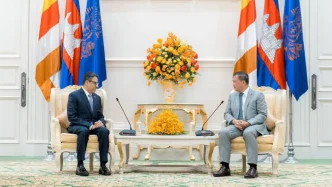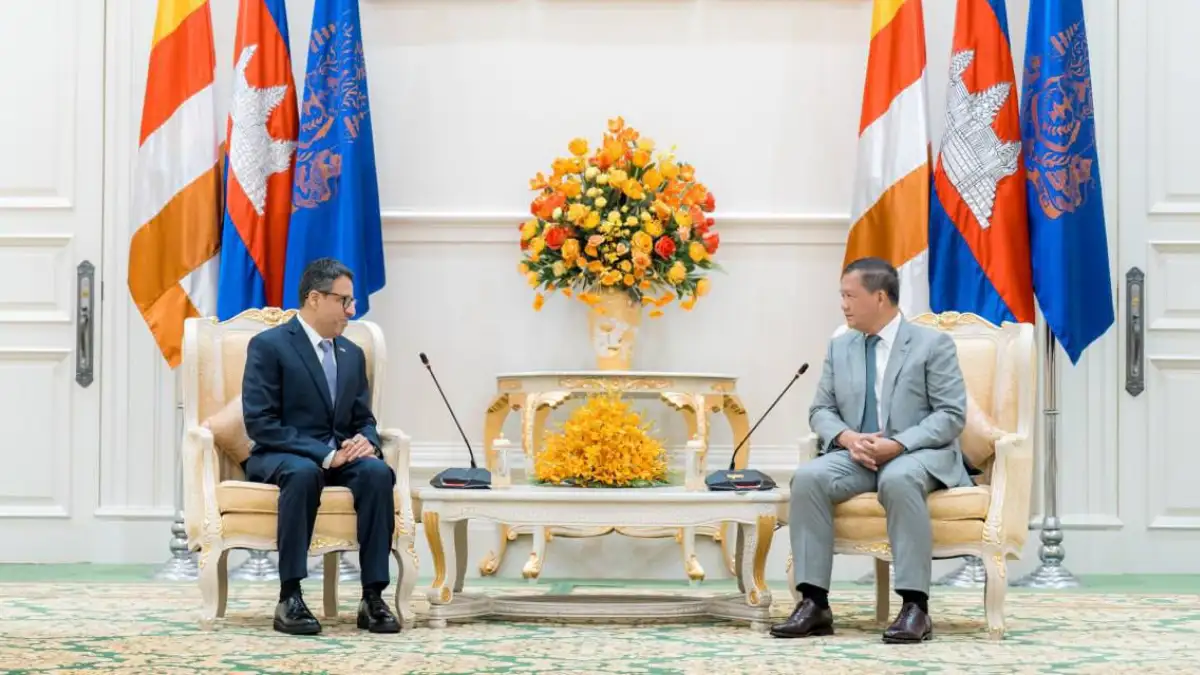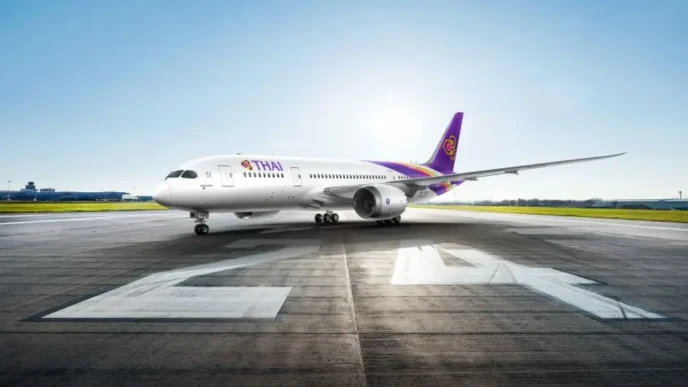In a striking testament to burgeoning economic ties, Cambodia and the United Arab Emirates (UAE) have reported a near USD 50 million surge in bilateral trade for the first half of 2025. This milestone, announced during a promotional workshop on the Cambodia-UAE Comprehensive Economic Partnership Agreement (CEPA) on August 11, 2025, underscores the transformative potential of strategic trade agreements in fostering mutual prosperity between nations geographically and culturally distant. With Cambodia’s exports dominating the balance and new avenues for investment and innovation on the horizon, this partnership could herald a new era of economic dynamism for the Southeast Asian nation.
A Milestone in Bilateral Trade
The trade figures, detailed by Her Excellency Tekret Kamrong, Secretary of State for Cambodia’s Ministry of Commerce, reveal a robust exchange valued at approximately USD 47 million. Cambodian exports to the UAE accounted for USD 36 million, comprising clothing, shoes, bags, natural rubber, and an array of other goods. In contrast, imports from the UAE, totaling USD 11 million, included minerals for fuel, plastic products, tobacco, and synthetic rubber. This imbalance highlights Cambodia’s growing role as a supplier of essential goods to the UAE, a market known for its high purchasing power and strategic position as a global trade hub.
The Cambodia-UAE CEPA, effective since January 31, 2024, has been pivotal in driving this growth. By eliminating import duties on a wide range of Cambodian products—textiles, bicycles, solar panels, electronic components, electric vehicles, rubber, rice, cassava, cashew nuts, pepper, coffee, cardamom, vegetables, fruits, and processed foods—the agreement has opened the UAE market to Cambodian producers. Beyond goods, the CEPA also facilitates Cambodian companies in offering professional services such as business, construction, engineering, and environmental solutions, further deepening economic integration.
Strategic Collaboration and Future Prospects
The momentum of this partnership extends beyond trade statistics. In May 2025, Cambodia’s Minister of Industry, Science, Technology & Innovation (MISTI), Hem Vanndy, met with Obaid Saeed Obaid Bintaresh Aldhaheri, the UAE Ambassador to Cambodia, to discuss expanding cooperation in industry, science, technology, and innovation. This dialogue builds on the foundation laid by the Cambodia-UAE Free Trade Agreement signed in 2023, a precursor to the broader CEPA. During the meeting, Ambassador Aldhaheri expressed optimism about Cambodia’s potential, stating, “We look at Cambodia and we see potential, we see growth.” He highlighted the UAE’s interest in sharing expertise in artificial intelligence (AI), data centers, apps, and software development, with a business delegation scheduled to visit Cambodia in November 2025 to explore investment opportunities.
Adding to the connectivity between the two nations, direct flights are set to commence in June 2025, a development announced by MISTI. Such infrastructure enhancements are expected to facilitate business travel and cultural exchange, further solidifying ties. Minister Vanndy welcomed these initiatives, emphasizing the importance of human resource development in science and technology as part of Cambodia’s Pentagonal Strategy, a national framework for economic transformation through industrialization and digitalization. “Human resource development in science and technology is critical, as technology is the fifth pillar of our Pentagonal Strategy” he noted, expressing eagerness to collaborate with UAE tech firms on investment, innovation, and value-added production.
Vanndy also extended an invitation to UAE companies to participate in Cambodia’s National Day of Science, Technology and Innovation in March 2026, an offer the Ambassador pledged to support. Additionally, the UAE’s proposal to provide science scholarships for Cambodian students was met with enthusiasm, signaling a commitment to long-term capacity building. These developments suggest that the Cambodia-UAE partnership is not merely transactional but rooted in a shared vision for sustainable growth and technological advancement.
Economic Implications for Cambodia
For Cambodia, a nation historically reliant on agriculture and garment manufacturing, the CEPA with the UAE represents a critical opportunity to diversify its economic base. The zero-duty access to the UAE market for a broad spectrum of goods aligns with Cambodia’s ambitions to expand its export portfolio beyond traditional sectors. The inclusion of high-value products like electronic components and solar panels in the duty-free list indicates a potential shift towards more technology-driven industries, a direction that aligns with global trends towards sustainability and digital economies.
Moreover, the trade imbalance—where exports significantly outpace imports—positions Cambodia favorably in terms of foreign exchange earnings. The USD 36 million in exports reflects a strong demand for Cambodian goods in the UAE, a market that serves as a gateway to the broader Middle East and North Africa region. If sustained, this could encourage further investment in Cambodia’s manufacturing capabilities, particularly in sectors like textiles and rubber, which are already competitive on the global stage.
However, the relatively low import value of USD 11 million suggests that Cambodia’s domestic demand for UAE goods remains limited, possibly due to cost factors or a lack of market penetration. Products like minerals for fuel and synthetic rubber are essential for industrial processes, but their import volume indicates a niche rather than widespread need. For the partnership to achieve greater balance, initiatives to increase Cambodian consumer access to UAE products—perhaps through targeted trade fairs or marketing campaigns—could be beneficial.
Broader Regional and Global Context
The Cambodia-UAE CEPA is part of a broader trend of Southeast Asian nations seeking economic partnerships beyond their immediate region. As global trade dynamics shift, countries like Cambodia are increasingly looking to diversify their trade partners to mitigate risks associated with over-reliance on traditional markets such as China, the European Union, or the United States. The UAE, with its strategic location, robust infrastructure, and status as a financial hub, offers a compelling alternative. Its role as a re-export center means that Cambodian goods entering the UAE could potentially reach other lucrative markets in the Gulf Cooperation Council (GCC) region, amplifying the impact of the CEPA.
This partnership also reflects the UAE’s growing interest in Southeast Asia as a region of economic opportunity. With its Vision 2021 and subsequent strategies, the UAE has prioritized economic diversification away from oil dependency, focusing on sectors like technology, renewable energy, and trade. Cambodia, with its young workforce, strategic location within the Association of Southeast Asian Nations (ASEAN), and government-led initiatives for industrial growth, presents an attractive partner for such ambitions. The planned UAE business delegation visit in November 2025 and the introduction of direct flights are tangible steps towards realizing this mutual interest.
Challenges and Opportunities Ahead
Despite the optimism surrounding the Cambodia-UAE trade surge, challenges remain. For one, the capacity of Cambodian businesses to scale up production to meet UAE demand must be addressed. While the CEPA eliminates tariffs, non-tariff barriers such as quality standards, certification processes, and logistical constraints could hinder smaller Cambodian enterprises from fully capitalizing on the agreement. Government support in the form of training, financing, and infrastructure development will be crucial to bridge these gaps.
Additionally, the focus on technology and innovation, while promising, requires significant investment in education and skills development. The UAE’s offer of science scholarships is a positive step, but Cambodia must also cultivate a domestic ecosystem that supports tech entrepreneurship and industrial innovation. Collaborations like the proposed participation of UAE firms in the National Day of Science, Technology and Innovation could serve as catalysts, provided they are accompanied by sustained policy efforts.
On the opportunity side, the direct flights starting in June 2025 could boost not only business interactions but also tourism, a key sector for Cambodia’s economy. The UAE’s affluent population represents a potential market for Cambodian cultural and historical tourism, centered around destinations like Siem Reap and the Angkor Wat complex. Marketing campaigns tailored to Middle Eastern travelers could unlock new revenue streams, complementing the trade-focused aspects of the CEPA.
Looking Forward
As Cambodia and the UAE continue to harness the benefits of their Comprehensive Economic Partnership Agreement, the trajectory of their bilateral trade appears poised for further growth. The near USD 50 million trade volume in early 2025 is a strong foundation, but the true test lies in sustaining this momentum through strategic investments, policy alignment, and cultural exchange. With upcoming initiatives like the UAE business delegation visit and direct flight connectivity, alongside a shared commitment to innovation and education, the partnership holds the promise of transforming economic landscapes on both sides. How these efforts unfold in the coming months will determine whether this collaboration becomes a model for cross-regional economic alliances in an increasingly interconnected world.















